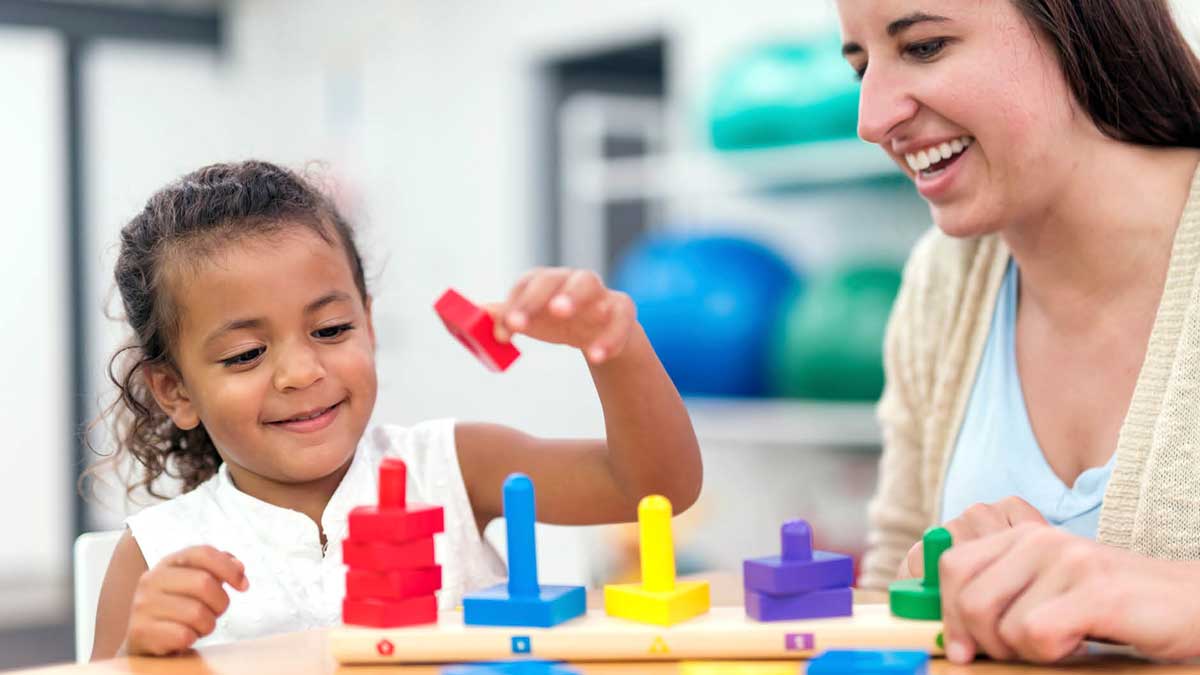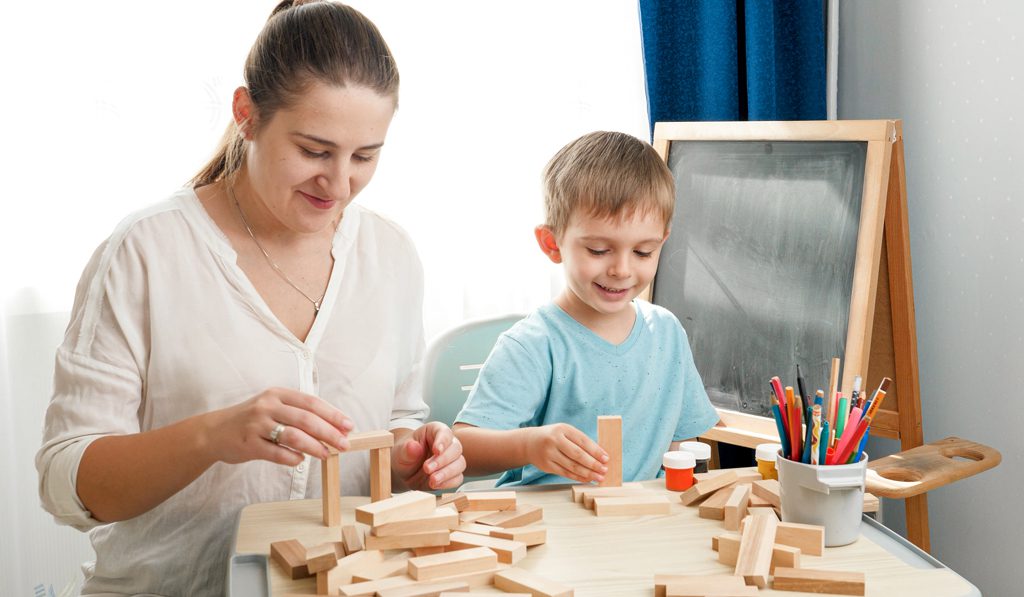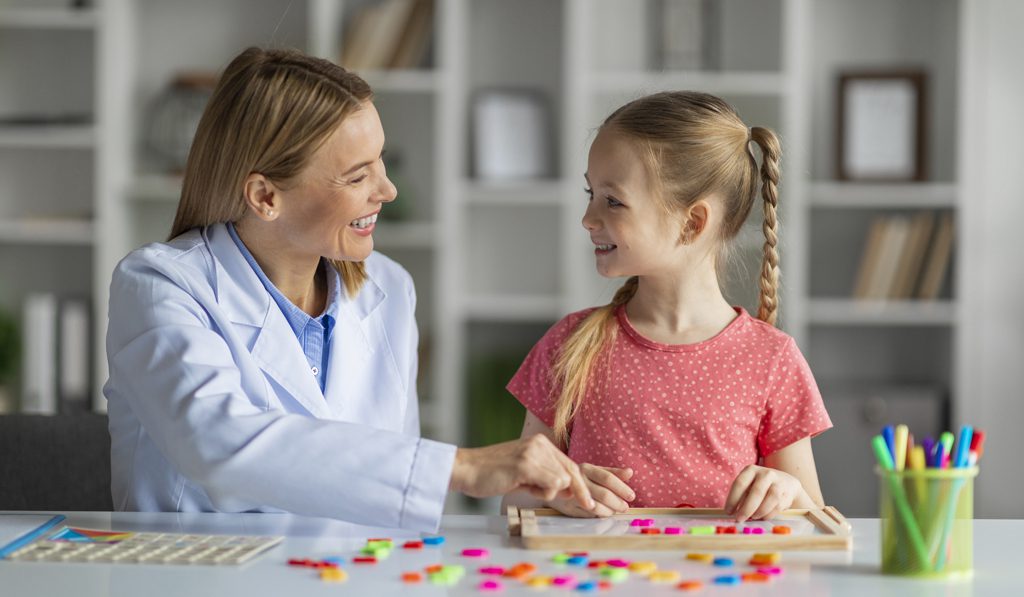Occupational Therapy for Children
The developmental rate of children varies from individual to individual. Some are fast learners, while some are slow. But, there are some children who struggle with basic daily activities that involve balance, movement, or even social interaction, among others. But, is there any way to overcome these issues? Fortunately, advancement in the medical world has brought in a special treatment known as occupational therapy for your children that promises to bring about positive change in their life, which is exactly what we are going to explain.
What is Occupational Therapy?
Built on the foundations of a scientific approach, occupational therapy is an evidence-based practice that helps people perform everything that they need and want with the help of daily therapeutic activities (occupations). Although it can be applied to everyone regardless of age, here, we are primarily focusing on the role of occupational therapy in pediatrics and child development.
Occupational therapy focuses on increasing independence in activity participation and facilitating age-appropriate development. This is to ensure that your child develops all the skills required to become an active participant in his/her community and lead an independent adult life.
This therapy ensures a holistic approach that looks at the physical, neurological, social, cognitive, and sensory development. With comprehensive assessments, an occupational therapist can identify the physiological or cognitive challenges that lead to the challenges your child is experiencing in his/her daily life.
Occupational therapy can help children participate in various activities in their school, thereby aiding them in integrating with the social dynamics taking place in their vicinity. If your child is recovering from an injury and needs help in regaining skills, then this therapy works like magic. The advantages of occupational therapy also include providing support for those who are experiencing cognitive and physical changes.
It is a sensitive process, which means that you need to practice caution as to where you get this service from. Getting help from amateur or uncertified personnel will harm your kid’s future. It is important to approach a well-rounded occupational therapy clinic that provides holistic and comprehensive assessments to address the issues your kid is facing.
Determining whether your child requires occupational therapy can be difficult, therefore we will dive into the various situations where occupational therapy is needed and can be beneficial. Alternatively, occupational therapists offer screenings, which is a tool used by therapists to determine your child’s current functioning and the possible need for therapy.
When Does Your Child Need Occupational Therapy?
Occupational therapy services can help your child reach his/her untapped potential. If you are concerned about your child’s development, activity participation, social interaction, or academic performance, then book an occupational therapy consultation. Let’s break it down even further for better understanding.
Now, we’ll help you recognize the key signs that should prompt you to book an occupational therapy consultation for your kid. Occupational therapy is needed by kids who have the following conditions:
- Children with developmental delays meaning those who take a considerable amount of time in developing key skills such as sitting, crawling, or walking.
- Those who fail to develop motor skills that involve small movements. This can involve anything from difficulty in holding a pencil and using scissors to not being able to use a straw to drink any liquid food item.
- Kids who have difficulty in any movement, strength, or balance-based activities such as going up and down a staircase or riding a bicycle or playing sports, among others. It also includes difficulties with motor planning, in which a child might find it difficult to copy movements or learn new sequences.
- Children with sensory processing difficulties, such as being unaware of the amount of force they are applying, or being overly sensitive to movements or different textures i.e. unable to wear clothing.
- Those who have uncontrollable oral sensors. This can include excessive drooling, tiredness after eating, lengthy eating process, over-sensitivity to specific food tastes or textures, or excessive chewing of inedible objects, etc.
- Children with difficulty in visual processing such as failing to recognize letters or understanding spacing between letters.
- Those who need excess help in developing simple playing skills and need constant guidance from an adult to imitate an action. It can even help those who don’t understand the concept of sharing and playing in a team.
- Kids who have poor social skills in adjusting to a new environment or in interacting socially with peers.
- Those who need too much assistance in improving common learning skills. If your kid is easily distracted or is hyperactive or have low energy or fails at concentrating, occupational therapy consultations can help them out.
Things to Keep in Mind While Going for an Occupational Therapy
When booking an occupational therapy consultation, keep in mind the following tips so that you can ensure that your child gets the maximum benefit out of the entire process:
Maintain Transparency
An occupational therapist will ask for details regarding your child’s medical and developmental history. This information is important as it may adversely affect the process. This involves any major information, right from your pregnancy to the current date.
The more information that the therapist has regarding your kid, the better will be the chances of the therapy being successful.
Collaborate with the Therapist
Occupational therapists encourage and facilitate the participation and collaboration of the parents, by making them part of the decision making process and listening to their concerns.
Depending on the challenges the child is experiencing, private sessions can help develop trust between the therapist and your child and lead to speedier progress. However, when required, the therapist would appreciate your presence in the session, as transferring the newly learned skills to home is a crucial part of the therapy.
Keep Communicating with Your Child
After each therapy session, keep communicating with your child regarding how he/she is feeling. However, don’t be overbearing in your approach. Treat your child as an adult and listen to him/her respectfully and with patience. Having a fluid and continuous flow of communication between yourself and your child will help you in keeping a track of the progress happening.
Feel free to ask the therapist any questions or raise any concerns you may have, as your participation and understanding throughout the entire process is crucial to your child’s progress.
Focus on the Comfort Level of Your Child
Remember, this is not a test that your child is going to. So, keep it casual when it comes to the choice of clothing. Make your kid wear something that he/she wants to or in which he/she is comfortable in. Ideally, a light t-shirt and sweatpants along with comfortable sneakers is a great option. Avoid any tight-fitting pieces of clothing, since it might restrict movement and activity participation during the session.
Sometimes, an occupational therapy session will involve playing with paints, dough or slime. So, the chances of clothes getting stained are very much there. This is a sign of a productive therapy session. So, keep the choice of clothing light and relaxed.
Final Thoughts
Building a sound future for their child is the dream of every parent. If your child is facing difficulties in adapting to the surrounding social situations or in overcoming the daily activities of life, we strongly recommend you visit our certified occupational therapy clinic and talk to our esteemed panel of occupational therapists to see how you can provide a better future for your kid.
We make sure that the needs, wants, and enjoyment of your child are always considered throughout the therapy. Besides, as experienced occupational therapists, we never push your kids to do something he/she doesn’t feel comfortable with.
References
Lenin C. Grajo, Patricia Laverdure, Lindy L. Weaver, and Karrie Kingsley – The American Journal of Occupational Therapy – Volume 74, Issue 2: Special Issue on Occupational Therapy Interventions for Children and Youth. Available at:
https://ajot.aota.org/
Tore Bonsaksen, Sebastian Voigt-Radloff, and Ted Brown – ResearchGate – Research in Occupational Therapy. Available at:
https://www.researchgate.net/publication/255992301_Research_in_Occupational_Therapy
Hammond A – NCBI – What is the role of the occupational therapist? Available at:
https://www.ncbi.nlm.nih.gov/pubmed/15301983
Wesam Barakat Darawsheh – NCBI – Awareness, and Knowledge about Occupational Therapy in Jordan. Available at:
https://www.ncbi.nlm.nih.gov/pmc/articles/PMC5987337/
Shawn C. Rollcorresponding Mark E. Hardison – NCBI – Effectiveness of Occupational Therapy Interventions for Adults With Musculoskeletal Conditions of the Forearm, Wrist, and Hand: A Systematic Review. Available at:
https://www.ncbi.nlm.nih.gov/pmc/articles/PMC5182014/

















